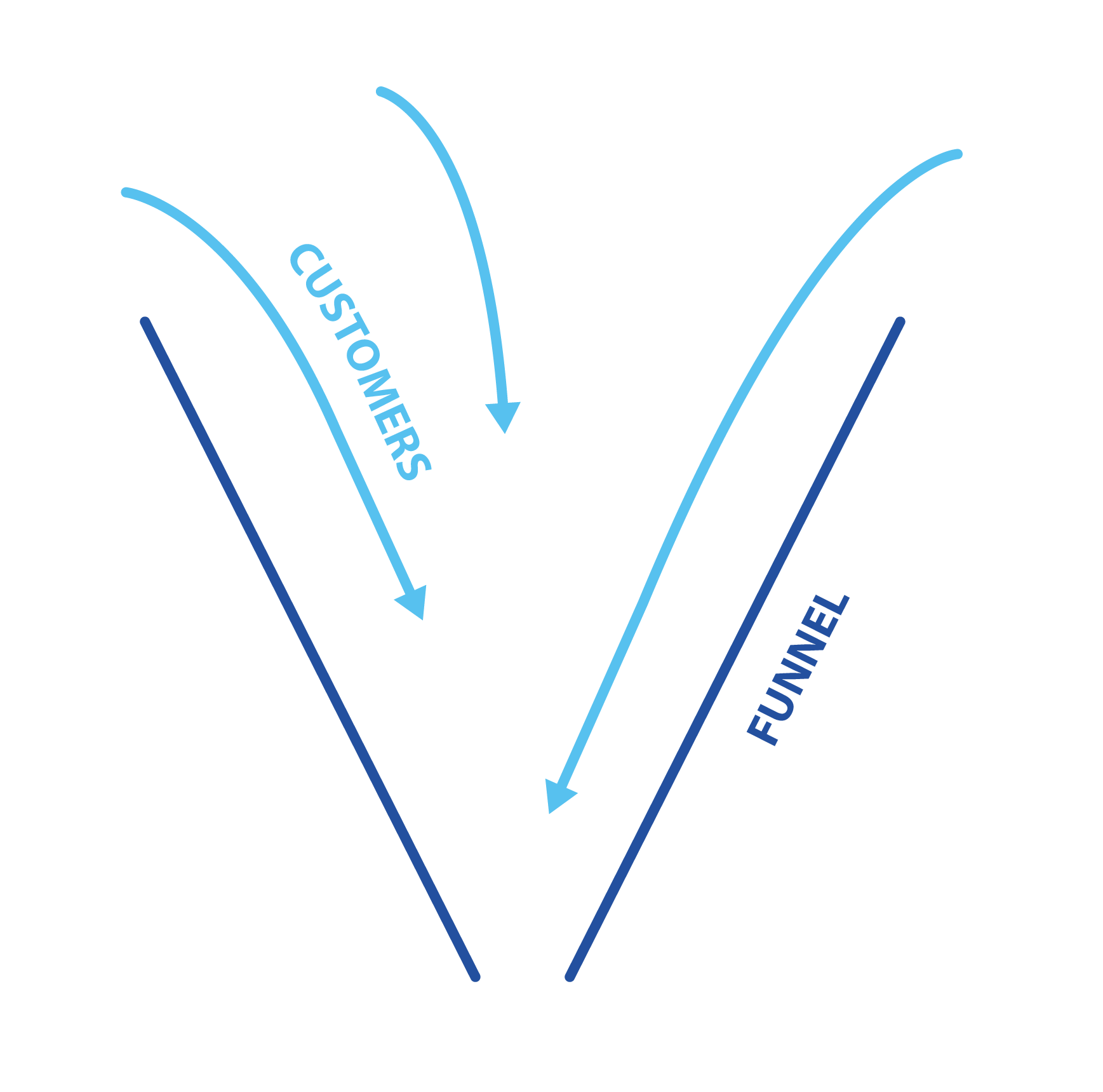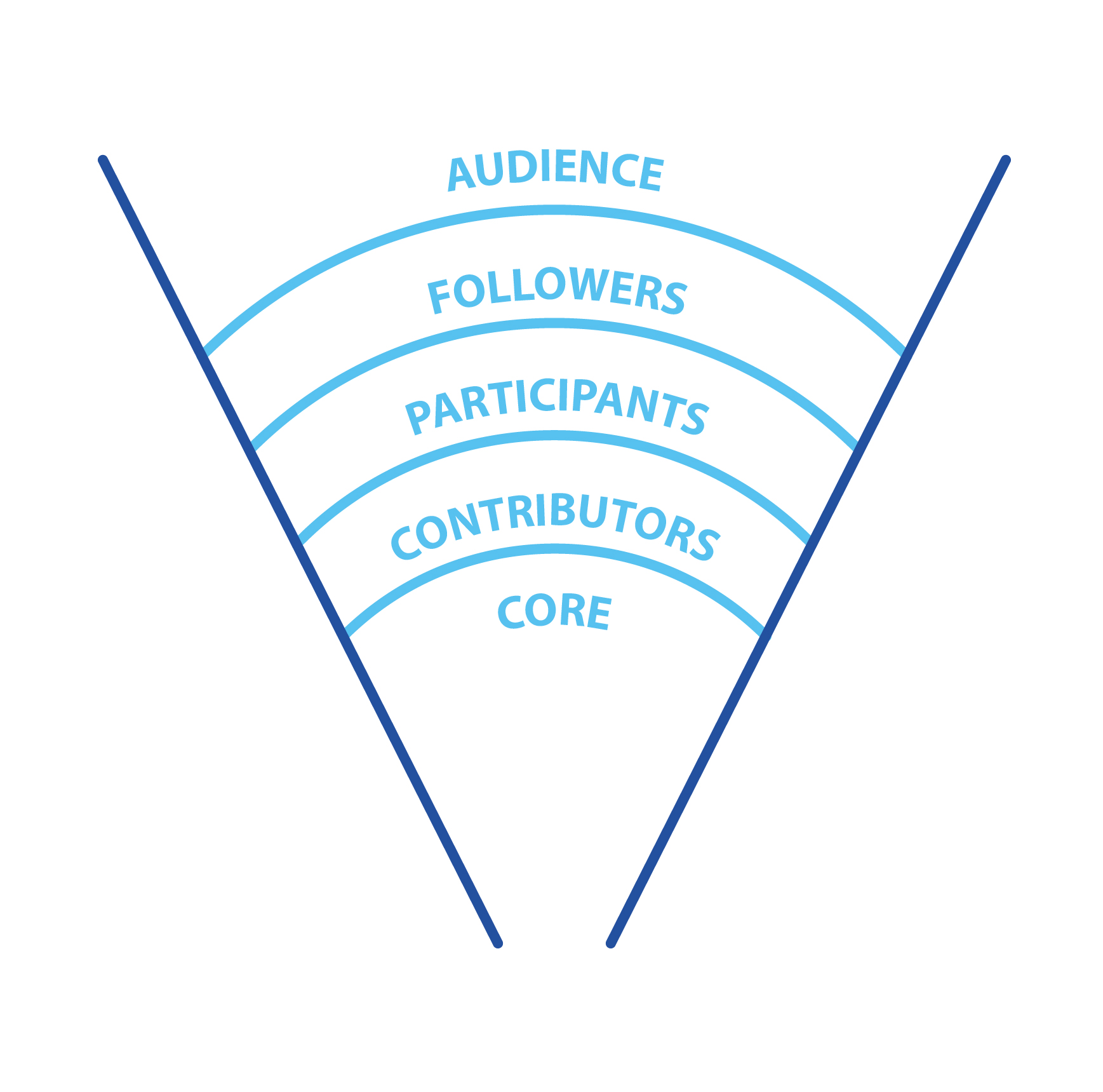The Funnel Model
This page was published in 2018 and is no longer an accurate description of CEA's thinking. We're leaving it up as a historical resource, which we know is cited elsewhere when referring to the funnel model.
What is CEA trying to do, and what are the purposes of its individual projects? And how might we identify important new projects that we’re missing?
A standard approach in business is to think of a sales funnel. The idea is that there is a large number of people interested in a particular product or service, some of them can be convinced to read more about a particular version of the product, and some of those can be convinced to purchase the product. Finally, existing customers can be persuaded to become repeat customers.
The funnel model helps to suggest different projects for the business, each with different goals and target audiences. For instance, the first step in a sales process might be to get customers to visit a certain website - perhaps by having an interesting blog. But closer to a sale, the focus will be on providing answers to last-minute worries, and making the payment process easy.

The metaphor also helps businesses think about what to focus on. If you have a slick payment process, but no traffic to your site, you should probably focus further up the funnel.
CEA is not in the business of selling products. Instead, we are trying to foster a community, which means a more cooperative approach than some businesses take in making sales. A community is also different than a business in that community members interact with each other in a way that customers tend not to. This means that community members help determine how likely it is that other community members become more engaged.1
Nevertheless, we find the funnel metaphor useful. We are trying to build a community, and one aspect of this project is encouraging people to become more deeply engaged with the community. The funnel metaphor helps us to think about the appropriate goals and audiences for our different projects.

Using the language of the Concentric Circles model, we can view the outer circles as upper layers of the funnel. In this case, we can see that different parts of CEA operate to bring people into different parts of the funnel:
- Audience to followers: It is not currently a focus of CEA to help people who have only just heard about effective altruism. However, we support some of the first resources that people will encounter when they do express an interest, such as
- The EA Newsletter
- Local groups
- Followers to Participants:
- Local groups
- Giving What We Can
- EA Global X conferences
- Content
- Participants to Contributors:
- EA Global
- CEA internships
- Contributors to Core:
- Effective Altruism Grants
- Individual Outreach events
- Individual Outreach coaching
- Core to leadership:
- The number of intellectual and organizational leaders will grow as new organizations are created, and new research areas established.
- CEA does not try to directly affect the size or makeup of the leadership, but runs some events, such as the Leaders’ Forum, catered to the leadership.
We are continuing to use this metaphor to identify parts of the above process that are working less smoothly than we would like, and thinking about how we can improve our operations in this area.
Currently, we are focusing mostly on Step 4: Contributors to Core. We think that there are many contributors in the community who are willing and able to work full-time on some of the world’s most pressing problems, and we are trying to help them build the skills and network to do so.
Footnotes
- This makes it even more important to make sure that community members at all stages have as accurate an understanding of effective altruism as possible, so that they can convey an accurate and convincing understanding to other community members. ↩